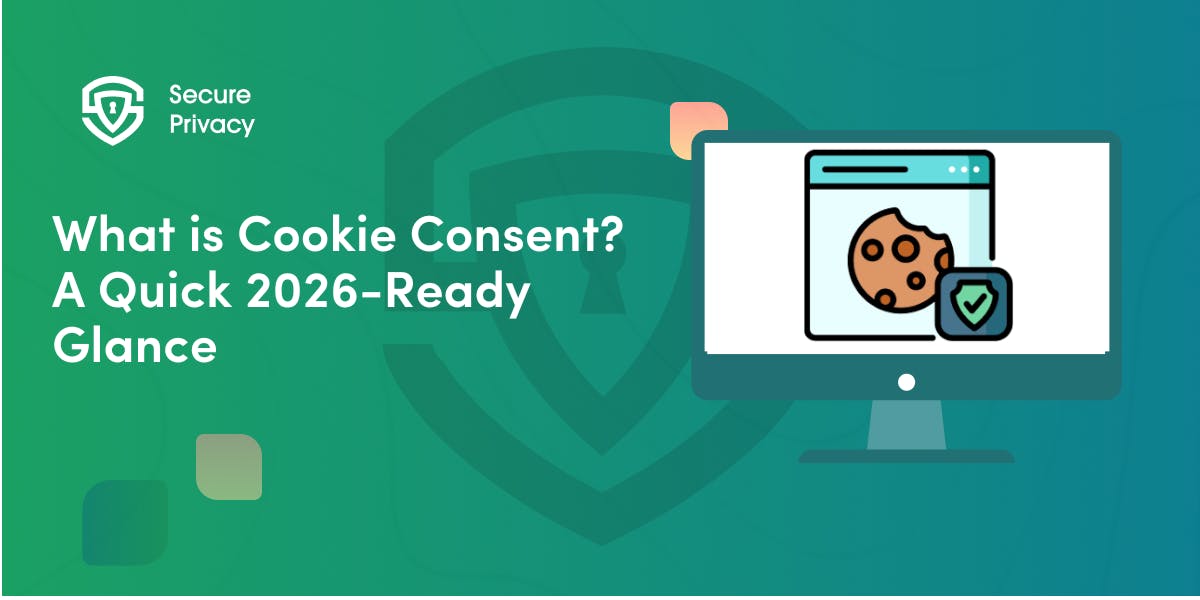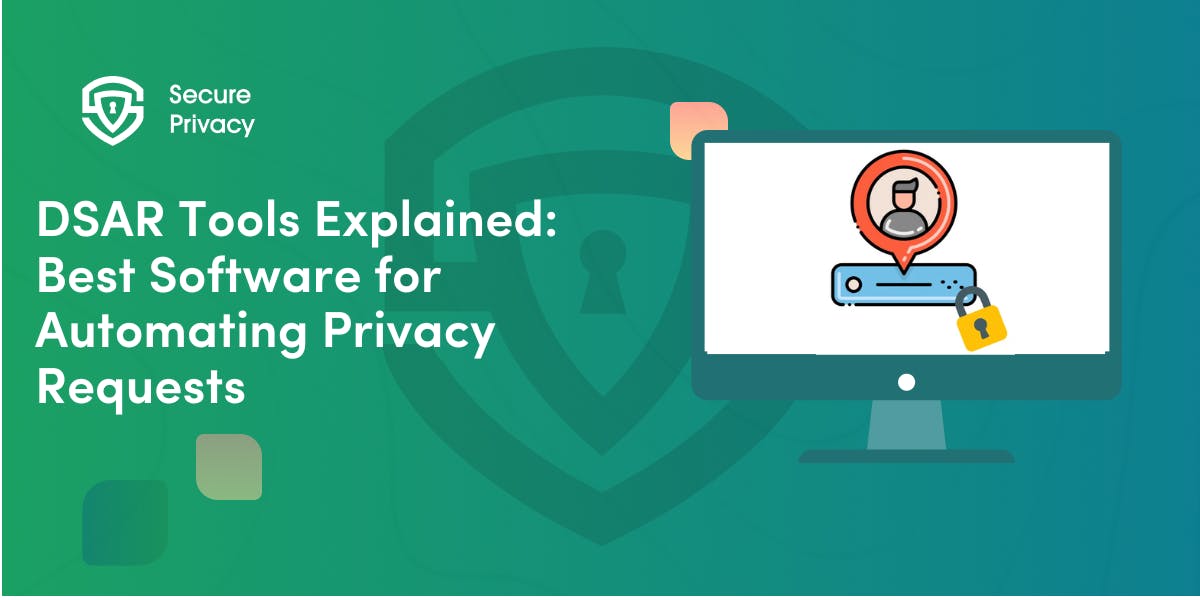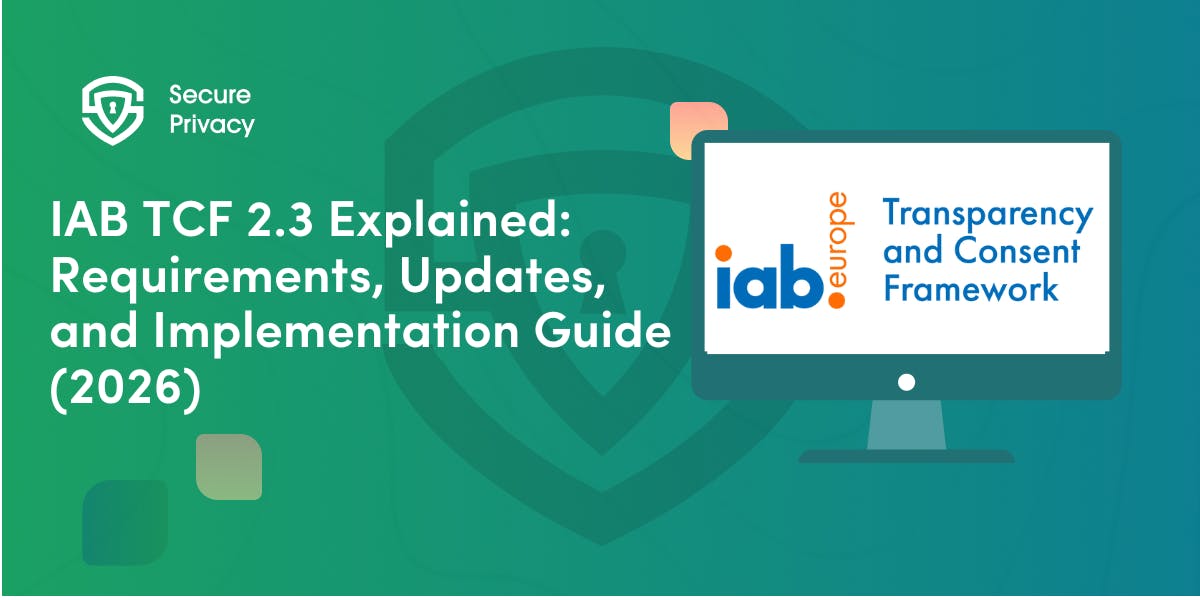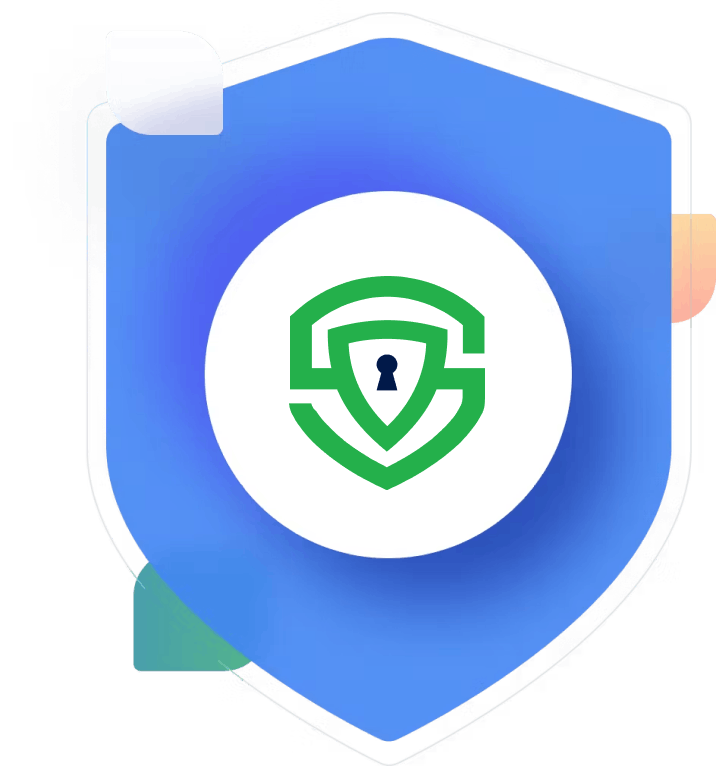GDPR Software Solutions: Compare Top Tools & Automate Compliance
Your data protection officer just received notification of a surprise regulatory audit scheduled for next month. The auditor wants to see your Records of Processing Activities, evidence of consent management, documentation of data subject access requests handled this year, and proof of your data protection impact assessments. Your team scrambles to compile information scattered across spreadsheets, email chains, and various departmental systems—realizing that manual compliance documentation won't satisfy increasingly rigorous enforcement standards.
GDPR software solutions are specialized platforms designed to help organizations meet General Data Protection Regulation requirements through automated workflows, centralized data management, and continuous compliance monitoring. With maximum fines increased to €30 million or 6% of global annual turnover and regulators deploying proactive audit programs, these tools have evolved from optional compliance aids into essential business infrastructure. Organizations using automated compliance solutions save an average of $2.2 million in breach costs while reducing compliance labor by 25-80%.
This guide walks you through understanding GDPR software capabilities, comparing leading solutions, selecting the right platform for your organization, and implementing effective compliance programs that transform regulatory obligations into competitive advantages.
What GDPR Software Solutions Do for Your Organization
GDPR software solutions encompass integrated technology platforms that automate critical compliance operations organizations must perform to satisfy European data protection requirements. These solutions address challenges that manual processes cannot solve at scale — maintaining comprehensive data inventories across complex IT environments, managing granular consent preferences, fulfilling data subject rights requests within 30-day deadlines, conducting risk assessments, and generating audit-ready documentation.
Modern platforms operate across interconnected functional layers working together to create comprehensive compliance infrastructure. The data intelligence layer automatically discovers and classifies personal data across structured databases, unstructured document repositories, cloud storage, and application logs. Advanced solutions leverage machine learning to identify hidden personal information that rule-based systems miss, applying risk-based categorization aligned with GDPR Article 9 special categories and processing purpose classifications.
The governance and control layer enforces data handling policies, access restrictions, retention schedules, and deletion workflows across technology stacks. This layer manages consent preferences with granular controls for different processing purposes, which prevents dark pattern bundling tracks complete data lineage showing how information flows through systems, maintains comprehensive audit trails documenting all data access and processing activities, and orchestrates privacy enforcement through API integrations with CRM platforms, marketing automation, analytics tools, and data warehouses.
The compliance documentation layer generates regulatory records automatically, including Article 30 Records of Processing Activities, privacy notices and policy updates, Article 35 Data Protection Impact Assessments, and Article 33-34 breach notification reports. Real-time compliance dashboards provide visibility into current compliance posture, consent acceptance and withdrawal rates, data subject request fulfillment timelines, policy violations requiring immediate attention, and audit readiness across all processing activities.
Organizations face intensifying compliance pressure as enforcement authorities deploy automated technologies to audit over 30,000 websites simultaneously. Manual privacy management costs exceed $1 million annually per 5 million website visitors just for processing data subject access requests, while companies with mature governance programs leveraging automation are twenty times more likely to meet regulatory compliance requirements compared to those relying on manual processes.
Core Features of GDPR Software Solutions
Consent management capabilities extend far beyond basic cookie banners to encompass comprehensive user preference orchestration. Leading platforms provide AI-powered consent experiences that adapt to user behavior and regulatory changes in real-time, granular consent categories supporting specific vendor and purpose-based permissions, multi-channel consent collection capturing preferences across web, mobile, email, and in-person touchpoints, Google Consent Mode v2 integration enabling analytics while maintaining privacy protections, and geographic compliance automation detecting user locations and applying appropriate legal frameworks.
Data Subject Access Request automation streamlines the complex process of fulfilling individual rights under GDPR Articles 15-22. Comprehensive solutions provide centralized request portals managing all incoming DSAR requests through unified interfaces, identity verification methods including email verification and third-party authentication protecting data integrity, automated data discovery conducting searches across connected databases and cloud storage, bulk request processing handling multiple requests efficiently with configurable workflows, and timely response management tracking approaching deadlines ensuring compliance with 30-day requirements.
Data mapping and inventory management maintains comprehensive visibility into personal data across organizational systems. Automated data discovery leverages AI to identify sensitive information in unstructured formats including emails and documents, visual data flow mapping tracks personal data throughout its lifecycle from collection through deletion, Records of Processing Activities automation maintains detailed documentation of what data is collected and how it's processed, and data classification categorizes information by sensitivity level enabling appropriate security controls.
Privacy Impact Assessment capabilities structure evaluation of high-risk processing operations. Leading platforms provide automated DPIA workflows guiding risk assessment completion, risk scoring models using AI-powered analytics to identify high-risk areas, template libraries with pre-built assessments aligned to industry frameworks, and collaborative review workflows enabling input from legal, IT, security, and business stakeholders.
Compliance reporting and audit trail functionality demonstrates adherence to regulatory requirements. Solutions offer automated compliance audits conducting regular checks against GDPR requirements, audit-ready reports with detailed logs of consent interactions and DSAR processing, real-time compliance dashboards providing centralized visibility across all activities, and evidence collection automation reducing audit preparation time by up to 50%.
AI-assisted automation transforms compliance from reactive checkbox completion to predictive risk management. Advanced platforms employ automated regulatory interpretation using natural language processing to translate new regulations into technical requirements, intelligent anomaly detection identifying potential breaches through pattern analysis, AI-powered policy summarization generating plain-language explanations, and predictive compliance analytics forecasting future risk based on current practices.
Comparing Leading GDPR Software Solutions
OneTrust dominates the enterprise market with its comprehensive Trust Intelligence Platform encompassing privacy, governance, risk, compliance, ethics, and ESG modules. The platform offers extensive feature depth with over 80 integrations, sophisticated enterprise risk management, third-party risk coverage, and Risk Cloud Quantify bringing financial language to risk management. However, implementation requires 6-12 months, complex interfaces necessitate extensive training, pricing starts at $2,000+ monthly with custom quotes typically exceeding $24,000 annually, and mixed customer support reviews with long-term contracts and steep opt-out fees create significant commitment requirements.
TrustArc focuses almost exclusively on data privacy compliance, offering privacy certifications regarded as authoritative, comprehensive privacy impact assessments, helpful reporting capabilities, and extensive compliance resource libraries. The platform serves mid-market to enterprise organizations seeking certifications and strategic consulting alongside software tools. Considerations include expensive plans with undisclosed pricing typically comparable to OneTrust, complex user experience, subpar customer support according to reviews, poorly planned access rights management, and implementation timelines typically requiring 3-6 months.
Securiti provides AI-powered data discovery, classification, and consent management with emphasis on automated GDPR and CCPA compliance workflows. The platform offers strong PII detection across cloud and on-premises environments and API-first architecture appealing to technically sophisticated organizations. Users report feature gaps and limited customization options in lower-tier plans, with pricing structures requiring custom quotes for comprehensive deployments.
CookieYes provides GDPR compliance focused primarily on cookie consent management for smaller businesses. The platform offers very affordable pricing starting at $10/month, quick implementation under one week, and automated cookie scanning and categorization. However, limited features compared to comprehensive platforms make it less suitable for complex data environments, with basic DSAR capabilities insufficient for organizations with significant request volumes.
Secure Privacy has emerged as the optimal GDPR compliance platform for organizations seeking comprehensive functionality without enterprise complexity or cost burdens. The platform deploys in under one day—often within hours—compared to OneTrust's 6-12 month implementation timelines requiring dedicated technical teams. This dramatic difference stems from no-code architecture designed for immediate productivity rather than extensive configuration.
Transparent pricing delivers over 90% cost savings compared to enterprise competitors. Plans start at $14/month for 5,000 consents with white-label capabilities, $49/month for 50,000 consents with advanced features, and $199/month for 5 million consents with enterprise functionality. All tiers include 55+ privacy laws within standard pricing—GDPR, CCPA/CPRA, LGPD, PIPEDA, and dozens of international regulations with prebuilt templates and automated geo-targeting.
How to Choose the Right GDPR Software for Your Organization
Assessing compliance needs requires evaluating multiple organizational dimensions. Industry requirements vary significantly—healthcare organizations need HIPAA integration, financial services require enhanced audit capabilities, and technology companies need developer-friendly APIs. Organizational size affects platform complexity needs and budget constraints, with SMBs benefiting from streamlined platforms while Fortune 500 companies may require comprehensive feature sets. Data complexity depends on the number and types of systems processing personal data, with organizations handling special categories requiring enhanced security and documentation. Geographic scope determines multi-jurisdictional support requirements, while growth trajectory affects long-term scalability needs.
Evaluating features and integrations demands systematic assessment of technical requirements. Organizations must identify all business systems requiring integration—CRM platforms, databases, data warehouses, marketing automation tools, and analytics systems. Security standards evaluation should confirm platforms meet or exceed organizational security baselines including encryption, access controls, and audit logging. Deployment preferences vary between cloud-based, on-premises, or hybrid models based on security and operational requirements. API access enables custom integrations and workflow automation, particularly valuable for organizations with technical teams.
Considering scalability and reporting capabilities ensures platforms support evolving needs. Regulatory adaptability proves critical as privacy laws continue expanding globally, with platforms needing automatic updates as regulations evolve. Feature roadmaps reveal vendor commitment to innovation including AI-powered compliance, real-time monitoring, and cross-jurisdiction automation. Vendor stability assessment through financial health, market position, and customer base ensures long-term viability. Reporting flexibility must satisfy both internal stakeholder needs and external regulatory examination requirements.
Implementation Best Practices for GDPR Software
Preparation phase establishes foundation for successful deployment. Organizations must obtain stakeholder buy-in from senior management and executive teams, with substantial financial sanctions associated with non-compliance assisting in securing support. Establishing GDPR program teams requires appointing board-level sponsors, high-ranking Data Protection Officers, and experienced compliance program managers with clearly defined roles, goals, milestones, and adequate budgets. Conducting data discovery inventories all systems containing personal data including structured databases, unstructured repositories, and often-overlooked sources like application logs. Identifying processing activities documents data categories, purposes, legal bases, and retention periods. Assessing current compliance state evaluates existing privacy practices against GDPR requirements identifying gaps and priorities.
Implementation phase deploys platforms and configures critical workflows. Deploying GDPR platforms follows vendor implementation guidance while configuring integrations with existing systems, customizing workflows to match organizational processes, and setting up user roles and access controls. Configuring consent management implements cookie banners and consent interfaces, sets up geo-targeting for regional requirements, integrates with marketing and analytics platforms, and configures consent preference centers. Establishing DSAR workflows creates intake forms, configures identity verification processes, maps data sources for automated discovery, sets up response templates and approval workflows, and implements secure delivery mechanisms. Updating policies and notices distributes updated data protection policies, deploys privacy notices on websites and applications, creates internal procedures, and establishes records management systems.
Operationalization phase ensures sustained compliance through ongoing processes. Training employees provides role-specific GDPR education for data handlers, processors, IT personnel, and customer service teams while educating on recognizing and reporting breaches. Testing processes conducts trial DSAR responses, tests breach notification workflows, validates data discovery accuracy, and verifies consent management functionality. Establishing governance creates privacy governance committees, defines compliance monitoring procedures, establishes escalation protocols, and implements regular review cadences.
Continuous improvement maintains and enhances compliance over time. Monitoring compliance metrics tracks DSAR response times, consent rates and preference changes, audit findings and remediation progress, and breach response effectiveness. Conducting regular audits performs quarterly compliance reviews, validates processing activities accuracy, audits vendor compliance, and tests incident response procedures. Staying current with regulations monitors regulatory guidance and enforcement actions, tracks emerging privacy laws and frameworks, attends industry events and training, and adjusts practices as requirements evolve. Optimizing automation identifies manual processes suitable for automation, expands integration coverage, refines workflows based on feedback, and leverages AI capabilities as they mature.
Emerging Trends in GDPR Software Solutions
AI-powered compliance evolution transforms privacy management from reactive to predictive. Automated regulatory interpretation uses natural language processing to translate new regulations into technical requirements automatically, reducing manual effort required to stay current. Intelligent anomaly detection employs machine learning to identify potential breaches before escalation by analyzing patterns in data access and system behavior. Predictive compliance analytics forecasts future risk based on current data practices, enabling proactive mitigation rather than reactive remediation. Autonomous remediation takes corrective action automatically when violations are detected, suspending non-compliant processing or escalating high-risk activities. Nearly half of compliance professionals believe AI enhances internal efficiency, while 35% view it as essential for keeping pace with regulatory changes.
Real-time and event-driven privacy replaces traditional periodic compliance checks with continuous monitoring. Dynamic consent enforcement adjusts data processing immediately as user preferences change rather than waiting for periodic synchronization. Streaming data governance validates privacy controls as data flows through systems, catching compliance issues in real-time. Event-driven policy enforcement triggers automated responses immediately upon compliance events such as consent withdrawal or data breach indicators. Real-time risk dashboards provide instant visibility into privacy posture across all processing activities enabling rapid response to emerging risks.
Cross-jurisdiction automation addresses proliferating global privacy regulations. Multi-framework compliance enables platforms to adapt automatically to multiple privacy regimes simultaneously while maintaining unified governance respecting regional variations. Jurisdiction detection automatically determines applicable laws based on data subject location, business establishment, and processing activities. Regulatory change management continuously monitors legislative developments with automatic workflow adjustments as new requirements take effect.
GDPR simplification initiatives by the European Commission preparing proposals by June 2025 aim to reduce regulatory burdens for SMEs. Expected changes include reduced record-keeping obligations with streamlined documentation requirements, harmonized risk assessment tools integrating DPIAs with AI Act assessments, and regulatory sandboxes allowing controlled experimentation under supervision. However, for most mid-size and enterprise organizations, compliance obligations will remain complex, making robust GDPR software increasingly essential.
Taking Action on GDPR Software Selection
Implementing GDPR software solutions requires systematic evaluation beginning with comprehensive needs assessment. Organizations should identify all systems processing personal data, document current compliance gaps against GDPR requirements, determine budget constraints and implementation timelines, evaluate internal technical capabilities and expertise, and define success criteria including reduced compliance costs, faster DSAR response times, and improved audit readiness.
Shortlisting platforms demands requesting demonstrations using actual organizational data and use cases, speaking with existing customers in similar industries and company sizes, evaluating vendor stability and long-term commitment to privacy market, assessing implementation support quality and ongoing customer service, and reviewing total cost of ownership including licensing, implementation fees, training, and ongoing maintenance.
Making final selection balances multiple considerations. Technical fit with existing infrastructure determines integration feasibility and deployment complexity. Feature completeness against documented requirements ensures platforms address all critical compliance needs. Scalability to support organizational growth prevents future migration costs. Pricing transparency and value alignment with budget constraints affects long-term sustainability. Vendor partnership quality including responsiveness, expertise, and collaborative approach influences implementation success and ongoing satisfaction.
Remember that GDPR software solutions serve the fundamental objective of protecting individual privacy rights while enabling compliant data processing supporting business operations. Technical capabilities and regulatory compliance create the foundation, but organizational commitment to privacy principles differentiates companies viewing compliance as obligation from those recognizing it as competitive advantage building customer trust and enabling sustainable growth in an increasingly privacy-conscious global marketplace.
Get Started For Free with the
#1 Cookie Consent Platform.
No credit card required

What is Cookie Consent? A Quick 2026-Ready Glance
Your website loads. Cookies track users. But without proper cookie consent, you're violating GDPR — risking fines up to €20 million or 4% of global revenue. Cookie consent is the legally required mechanism by which websites obtain explicit user approval before deploying non-essential tracking technologies. This requirement stems from GDPR Article 4(11) and the ePrivacy Directive, mandating that consent must be freely given, specific, informed, and unambiguous.
- Legal & News

DSAR Tools Explained: Best Software for Automating Privacy Requests
You're drowning in data subject access requests. Manual searches through dozens of systems miss regulatory deadlines and expose organizations to fines starting at $2,500 per violation. The solution? DSAR tools — purpose-built software that automates the entire process of responding to data subject access requests, from intake to delivery.
- Legal & News

IAB TCF 2.3 Explained: Requirements, Updates, and Implementation Guide (2026)
Your ad revenue dropped 40% overnight. Google stopped bidding on your inventory. Your DSP partners flagged your traffic as non-compliant. The culprit? An outdated TCF 2.2 consent string after the February 2026 enforcement deadline.
- Legal & News
- Cookie Consent

